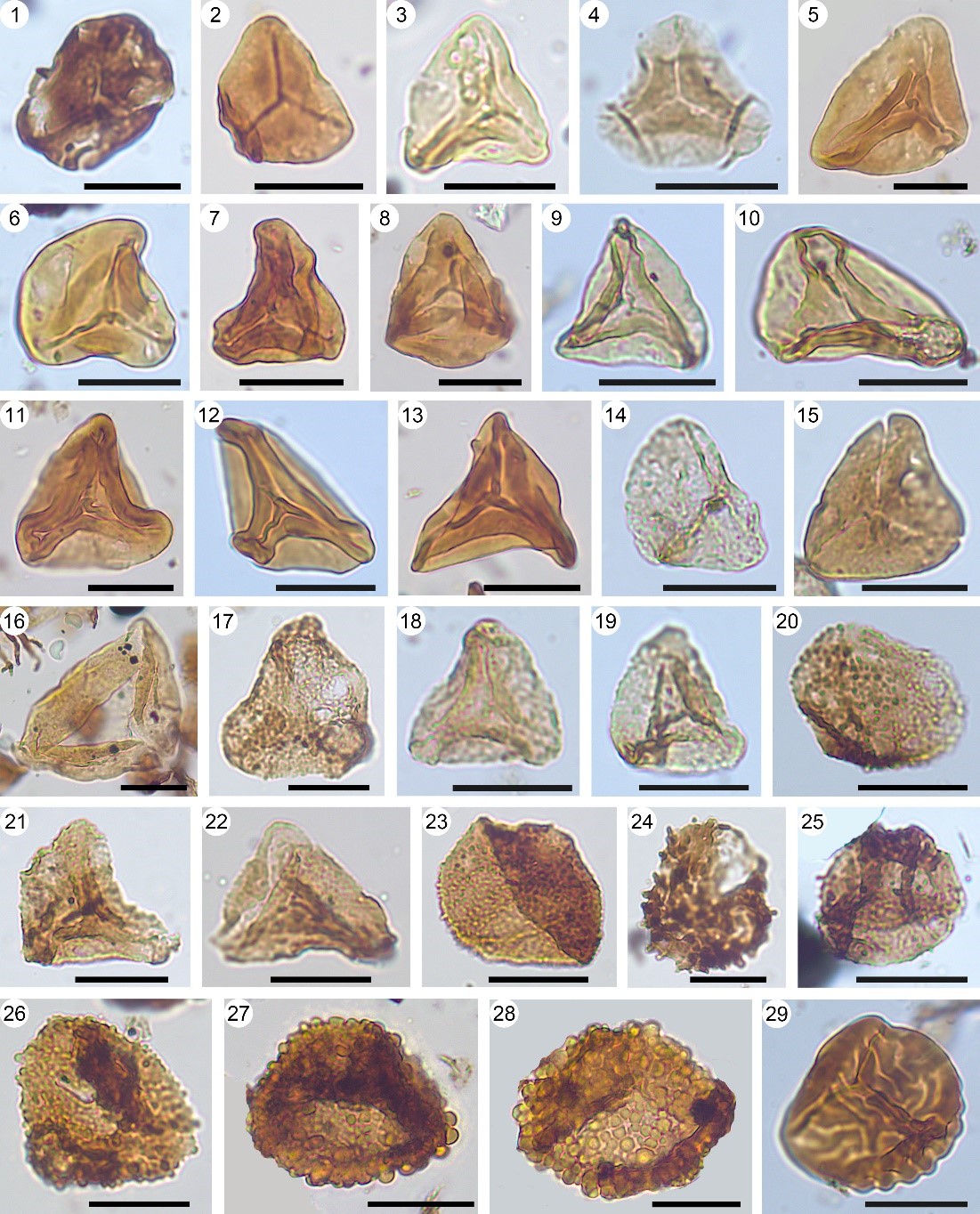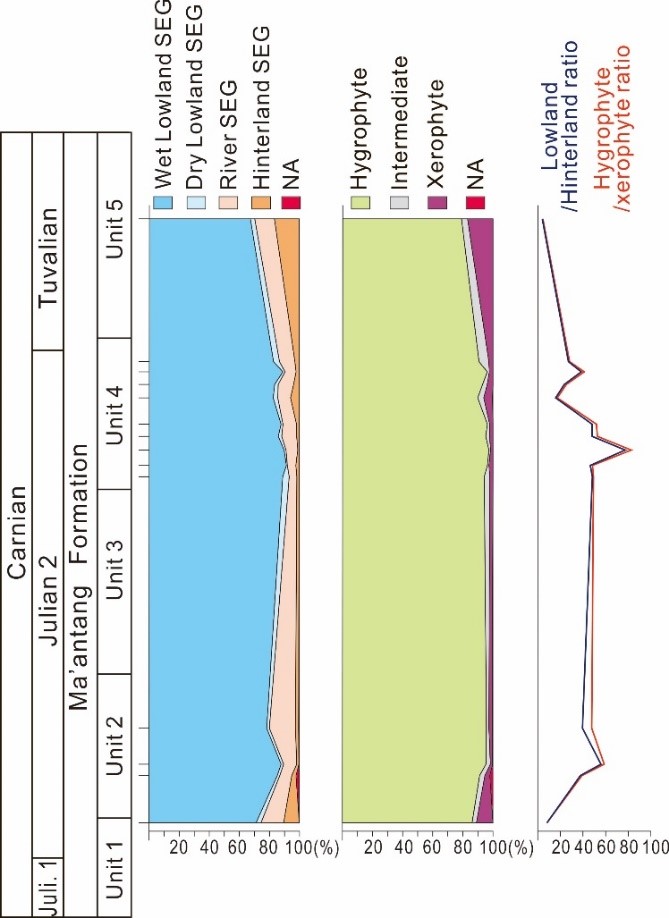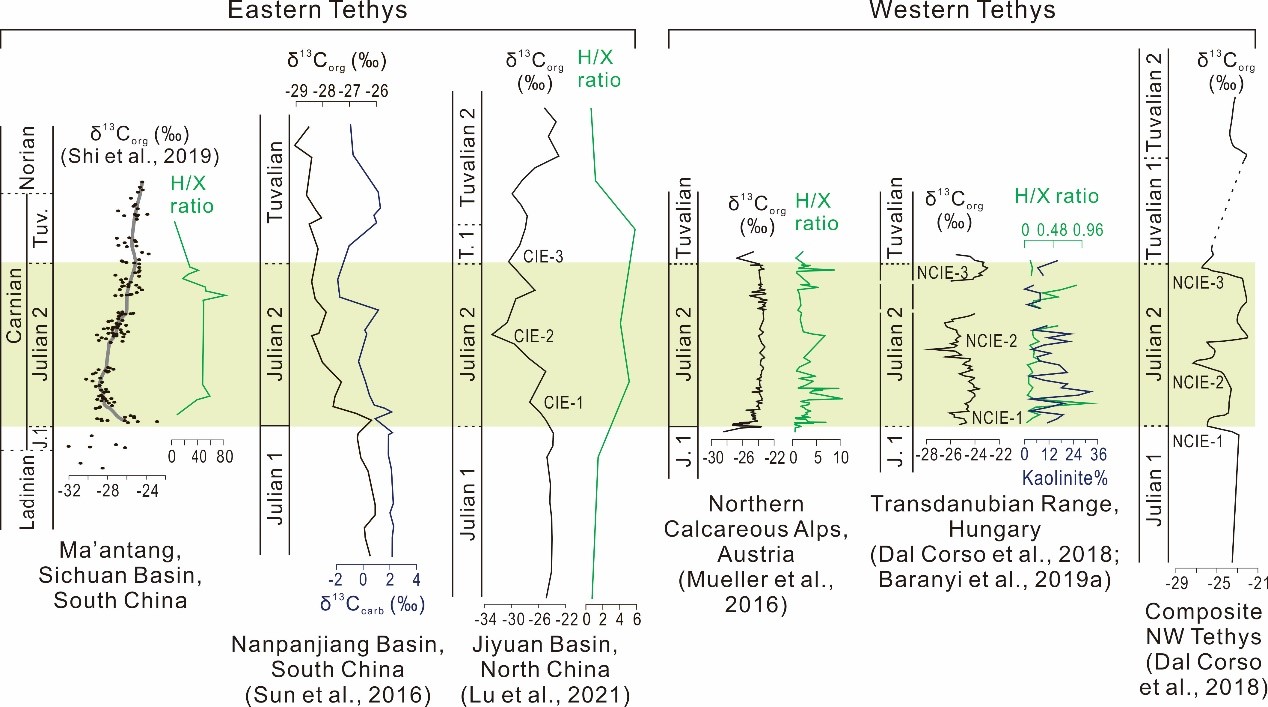The Late Triassic Carnian Stage witnessed major climatic changes during the mid-Carnian (Julian 2-Tuvalian 1), known as the “Carnian Pluvial Episode” (CPE). The CPE is characterized by increased rainfall, humid and warmer climate, oceanic anoxia, carbon cycle perturbations and demise of carbonate platforms. The global extent of the CPE-related humid climate and their impact on the terrestrial ecosystem are the major highlighted issues for the studies.
Recently, Dr. LI Liqin, Prof. WANG Yongdong and their group from the Nanjing Institute of Geology and Palaeontology of the Chinese Academy of Sciences (NIGPAS), and Prof. Wolfram M. Kürschner from the University of Oslo, investigated the palynoflora from the Ma’antang Formation at Ma’antang section in Jiangyou area, western Sichuan Basin, and reconstructed Carnian paleovegetation and paleoclimatic setting in this area. The research results were recently published in Review of Palaeobotany and Palynology, an international journal.
The Ma’antang section in the Jiangyou area is the type section the Ma’antang Formation. The previous ammonite and conodont studies have established a relatively reliable geological age frame work for this formation. Diverse and well-preserved sporomorphs were identified from the Ma'antang Formation at Ma'antang section, and two palynological assemblages were distinguished.
The study reveals dominance of fern spores (represented by Dipteridaceae/Matoniaceae) in the Ma’antang palynoflora, especially in the middle part of the Ma’antang Formation. Lycopsid spores and gymnosperm pollen (including conifers, cycadophytes/ginkgophytes and seed ferns) are much less abundant. This palynofloral composition reflects a general humid climate setting in the western Sichuan Basin during the Carnian. Overwhelming predominance of wet Lowland SEG and hygrophyte elements, and increased Lowland/Hinterland as well as hygrophyte/xerophyte ratios observed in Units 2-4 of the Ma’antang Formation, suggesting intensified humidity during the Julian 2 in this area. This study correlates well with observations from North China as well as western Tethys, thus further supports a global nature of humid climate associated with the CPE.
This study presents the first palynological evidence for vegetation changes and humid climate during the CPE in South China, providing important evidence for better understanding the terrestrial vegetation response to the CPE from the eastern Tethys area.
This research was supported by the National Natural Science Foundation of China, the Strategic Priority Research Program (B) of the Chinese Academy of Sciences, and the State Key Laboratory of Palaeobiology and Stratigraphy.
Reference: Li, L.Q., Kürschner, K.M., Lu, N., Chen, H.Y., An, P.C., Wang, Y.D.*, 2022. Palynological record of the Carnian Pluvial Episode from the northwestern Sichuan Basin, SW China. Review of Palaeobotany and Palynology, 304: 104704. https://doi.org/10.1016/j.revpalbo.2022.104704.

Fig. 1 Representative fossil spores from the Ma’antang Formation at Jiangyou, western Sichuan Basin. Scale bar= 20 μm.

Fig. 2 Carnian palynofloral composition revealing paleoclimatic setting in Jiangyou area

Fig. 3 Correlation of the carbon-isotope records and palaeoclimate proxies between eastern and western Tethys during the mid-Carnian. H/X ratio: hygrophyte/xerophyte ratio.
Contact:
LIU Yun, Propagandist
Email: yunliu@nigpas.ac.cn
Nanjing Institute of Geology and Palaeontology, Chinese Academy of Sciences
Nanjing, Jiangsu 210008, China
